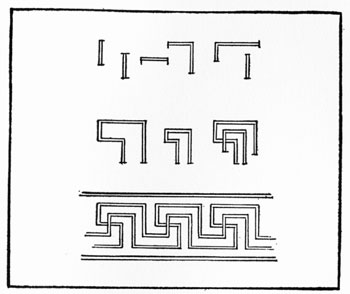The Human Mind
The human mind is so constituted that it can grasp but a limited number of impressions at one time. Before it can comprehend a great variety of phenomena it must divide these phenomena into classes or groups, according to some principle of order. This principle is the arrangement of like with like. Thus primitive man, surveying the multitude of living creatures about him, observes that some fly in the air, and these he calls birds; while others, which live in the water, crawl upon the earth, or walk upright upon four feet, he calls fish, reptiles and animals. Observing further that some of the animals eat flesh, he marks off the carnivores, which are in turn divided into genera-as the canines and felines-and finally separated into individual species. Of course his groupings will not satisfy a later science. He will call the whale a fish, and the bat a bird. But the point is that they will satisfy his mind. When things look alike, or behave in the same manner-that is, when they have the same dominant qualities-he groups them together and is satisfied. Out of this process of grouping like with like have grown all the cosmologies, religions, sciences and arts, which, however widely they may differ in content, have for their common purpose the arrangement of like with like, and the organization of the phenomena with which they are concerned, whether they be gods or butterflies, in an order of dominance and subordination.
Since the mind works this way in all things, it will work this way in its apprehension of beauty; and without venturing into the field of physiological psychology we may assume the fact that whenever the mind is able without difficulty to recognize easily perceptible likenesses among a relatively wide range of objects and effects seen at the same time esthetic pleasure will result. That is, the mind will in some degree, however slight, feel the thrill of beauty. If it cannot recognize such likenesses, or can recognize them only with difficulty, or if the objects and effects perceived lack diversity, esthetic pleasure will not result. Thus the mind could see no beauty, but only confusion, in a hundred straight lines and right angles drawn at random on a sheet of paper, because of the total absence of likenesses among such stimuli. Nor could it see beauty in four of these lines arranged to form a square, and six more of them arranged to form a swastika, because of the lack of variety in the effects thus presented to it. But if the entire hundred were arranged in a design of squares and swastikas and border lines to form a Greek fret, the mind, easily perceiving the resemblances in the complex whole, would call it beautiful. The fret, to be sure, would not appear to possess a high degree of beauty because of its relative lack of diversity; but it would reveal some beauty because it would constitute an imaginative expression of variety in unity, one in the manifold.
A furnished room necessarily presents to the mind of one who enters it a wide variety in form, texture, hue, tone and significance. When, surveying the varying lines and shapes in such a room, the mind is able without difficulty to recognize resemblances among-them, it is more or less keenly aware of the presence of beauty in the room. When it also recognizes likenesses in hue and tone among a diversity of hues and tones this consciousness of beauty is intensified. And if to these purely physical stimuli be added the perception of like significance or emotional values-as when color and form and texture converge in the expression of an emotional idea like that of tranquillity or elegance or daintiness-the consciousness of beauty is still further heightened.

FIGURE 8. – Beauty cannot be made to appear in any composition which lacks either unity or variety. When there is variety in unity there is beauty, however slight.
Thus it appears that in the creation of beauty through unity in diversity the fundamental principle of composition, the basic requirement and sine qua non of all good work, is to ensure unity by putting together things that are alike. These like elements may of course be more or less alike. They may be exactly alike or only partially alike. They may be alike in physical appearance or in emotional significance. The degree of likeness may be perfectly obvious or exquisitely subtle. But whether obvious or subtle, it is absolutely essential to the beauty of the finished room that manifold resemblances reveal themselves among its parts, and that these resemblances be perceptible without effort; for mental effort is fatal to the perception of beauty.
 "Finally! Step-by-Step Guidebooks Show
"Finally! Step-by-Step Guidebooks Show